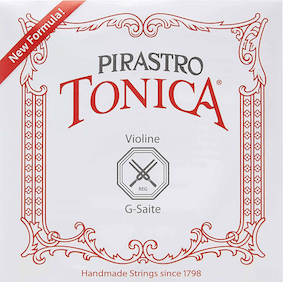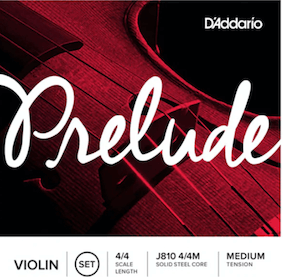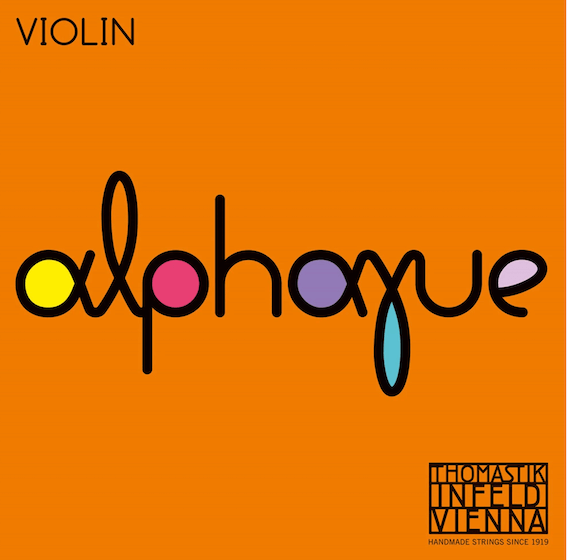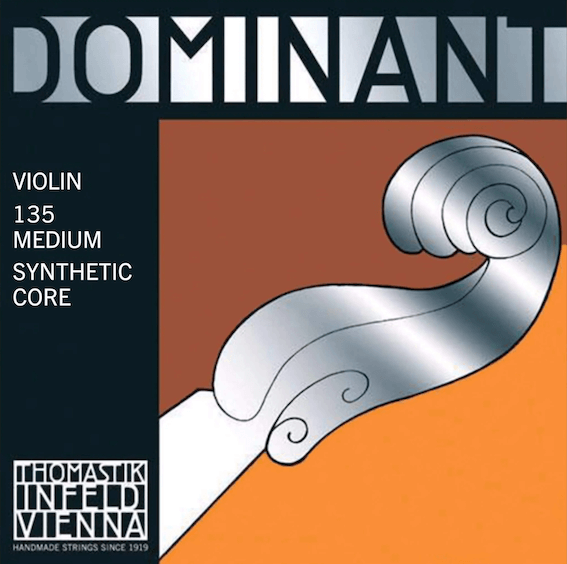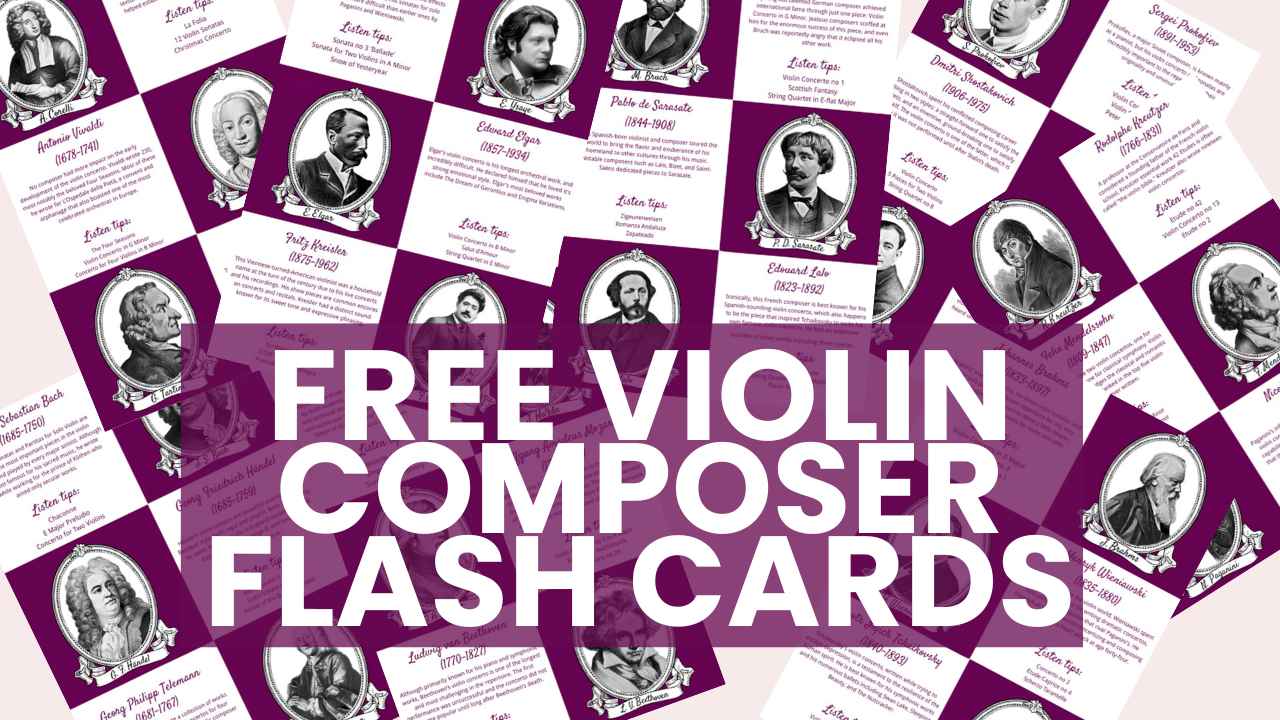Best Violin Strings for Children’s Violins
Oops, your kid’s violin string broke!
Here are good strings to buy for kid’s violins recommended by violin teachers
Let’s start with a quick top 3 buying guide
After that I will share some more about when and how to replace your violin strings and you’ll find more in depth violin string reviews of the five best strings for children’s violin.
#1 Pirastro Tonica violin strings
Best overall
Most popular and most recommend by violin teachers. It’s a synthetic core string that has a great well-rounded open sound on all fractional sizes.
#2 D’Addario Prelude
Most affordable
Affordable steel strings that have a warm open sound even on the smallest sizes children’s violins.
When to replace your children’s violin strings?
Obviously when a string snaps, you need to replace it. However it’s best to not let it come that far. Usually when strings are worn down they don’t sound as good and waddle a bit in pitch. Certainly the last thing can get in the way of your child’s violin progress as the string won’t stay in tune even if your child plays in tune. This is very confusing.
When you bought a relatively cheap violin set online, think anything below $ 200, usually the strings are very bad quality steel strings. Steel core strings aren’t that bad (see my violin string reviews below), but sometimes the quality that ‘comes with the violin’ is very disappointing and sometimes even impossible to stay in tune and play.
Can I replace my child’s violin strings myself?
Of course your child’s teacher will be happy to replace the string during the lesson, but then you need to wait until the lesson and it will cost you valuable lesson time. It’s perfectly doable if you’re a bit careful to replace violin strings yourself. Watch this video for a close up step by step guide to replacing violin strings by yourself.
Which size of violin strings should I buy for my child?
It’s very important that the sizing on the string set corresponds with the sizing of the violin. If you place for example 4/4 stings on a 1/2 violin, the string tension will be too low when you’ve tuned them. It will be impossible to play. If you lost what size violin your child has, just measure the body or total length of the violin and look it up in this violin size chart.
Why should you use good quality violin strings for your child?
Even if your child just started playing the violin, good strings are very important. Cheap strings can injure your kid’s finger tips (very painful cuts are possible from low quality strings) and can also be hard to learn on. Learning to play the violin is hard enough as it is and bad strings can really hurt your kid’s motivation for the violin.
What difference do strings make?
Bad, cheap, old or worn down strings make it impossible to play in tune on the violin. Besides that they can cause very painful cuts in your child’s finger tips. Here are the differences between bad and good quality violin strings:
- Comfort: cheap strings are often very thin and tight. This will hurt the finger tips sometimes up to the point that your child get’s a finger tip cut. Besides painful (and a dent in the motivation), this also means that they can’t play the violin for a while.
- Tuning stability: bad strings don’t stay on the right pitch. Playing in tune on the violin is hard enough as it is. Let’s make sure your child plays on good strings that don’t make it harder.
- Stability of pitch: cheap, old or worn down strings waddle. It’s a bit different than my point above. Waddling means that the string stays on the same tension, but while playing the note changes in pitch. Very annoying and really gets in the way of your child’s practice.
- Sound: good strings simply sound a lot better. It can even seem like you have a different violin. If you bought a cheap violin set, upgrading it with a set of good quality strings can make a BIG difference.
- Durability: With good strings you end up saving yourself money. They might cost a little more, but you can enjoy them much longer. Sometimes even over a year, depending how much your child plays.
What are the best strings to buy for my children’s violin?
Now you know how to replace your child’s violin strings, when to replace them, what size you need to buy and what difference good strings make, it’s time for some in depth reviews. These strings are not only my personal picks as a violin teacher, but I’ve also surveyed over fifty violin teachers to learn their favorite strings.
#1 Pirastro Tonica violin strings
Pirastro is a German string brand that is used by soloists as well as orchestra violinists all over the world. The Tonica strings are nylon core strings that give violins of each size an open, well-rounded and balanced sound. What I also like about these strings is that (like other synthetic core strings) they are not too thick and not too thin. When strings are too thick, on some fractional sizes they are very hard to place. When strings are too thin, they are not comfortable under your finger tips. The strings are easy to play, even in high positions. Tonica’s have short break in time, the tuning stability is good and the last relatively long.
Set price: $ 42
Pros:
- Great sound
- Last long
- Not too thick
- Available down to 1/32 size
Cons:
- Sizing is grouped 4/4, 3/4 to 1/2, 1/4 to 1/8 and 1/16 to 1/32, not a ‘size per size’
- Some find these too expensive
#2 D’Addario Prelude violin strings
Warmest sounding affordable steel core violin strings. Some violin players associate steel core strings with bright or even harsh sound. For fractional sized children’s violins however, you might need some extra brightness. Children’s violins have to produce the same pitch as 4/4 adult violins, while they are much smaller. A bright steel core string might just bring out a bit punch and volume a children’s violin might need. These Prelude strings are relatively warm sounding. With just under $ 20 per set, they are a good quality affordable option.
Set price: $ 19,99
Pros:
- Warm sound
- Affordable
- Durable
- Great tuning stability
- For each size one size (no grouping), so the string is well adjusted to the size of the violin
- Separate 1/16 even, so you don’t need to use 1/8 strings for a 1/16 size (which often means a low string tension)
Cons:
- Less warm sounding than synthetic core strings
- Slightly higher string tension than synthetic core strings (synthetics feel softer)
#3 Thomastik Alphayue violin strings
If you’re renting a children’s violin at a violin shop, changes are it has the Alphayue strings. They are good sounding affordable synthetic core strings that are comfortable under the finger tips. Thomastik Dominant’s have been the gold standard for years, but are quite expensive at the moment and the Alphayue strings are an excellent alternative. As we’re used to from Thomastik they have a short break-in time and great tuning stability.
Set price: $ 31
Pros:
- Short break-in time
- Great tuning stability
- Durable
- Synthetic core strings at a very reasonable price
Cons:
- For a warmer tone, choose the Tonica strings
#4 Thomastik Dominant violin strings
Thomastik Dominants are one of the first synthetic core strings and they are absolutely the gold standard for violin strings. They are used by famous soloists like Hilary Hahn and Anne Sophie Mutter. You absolutely can’t go wrong buying dominants. For viola it’s a big advantage that they’re available in fractional sizes just as for the violin. Almost every violinist grew up with Dominants and teachers still recommend them. I do find that over the years they’ve become a bit on the expensive side, while personally I don’t find them much better than Tonicas.
Set price: $ 77
Pros:
- Wonderful neutral sound
- Durable
- Short break-in time
- Great tuning stability
Cons:
- They’ve gotten a bit expensive over the years
#4 Super-Sensitive Red Label violin strings
Don’t be put off by the ‘bright sound’, because certainly in the smaller fractional sizes this could just mean that it brings out the sound and the small violin doesn’t sound too soft. Red Labels are the industry standard for school instruments and fiddlers. Their durability and tuning stability is great. If you’ve used Preludes and miss a bit of volume or punch in a smaller sized violin, it could be sensible to switch to Red Labels.
Set price: $ 22
Pros:
- Bright sound
- Durable
- Great tuning stability
- Affordable
Cons:
- Not available in 1/16 size
- Might be too bright for some instruments

Hi! I'm Zlata
Classical violinist helping you overcome technical struggles and play with feeling by improving your bow technique.
Closing notes
I hope I’ve given you some reassurance that in the case your kid’s violin string breaks that you can select a good string and replace it at home. Also when you’ve bought a cheap violin set, the renewal of the strings can make a big difference in sound and playability.
Guide to buying violin strings
If you’d like to read a lot more about violin strings, what they’re made of and see a lot more string reviews, check out this violin string buying guide.
Free online violin tuner
If you just replaced your strings, tuning the violin might be a challenge. New strings typically need some time to break in and you need to tune the violin very often. Use my free online violin tuner right here to make it a lot easier for yourself, even if you’re a beginner.
What strings are on your child’s violin?
And what do you like about them? Leave a comment and share your experience with other budding violinists and their parents.

